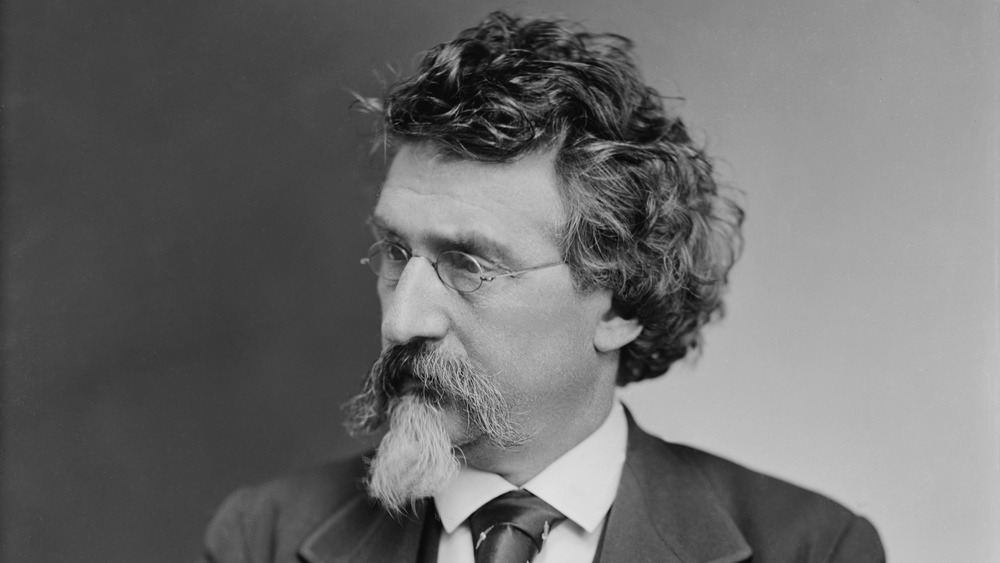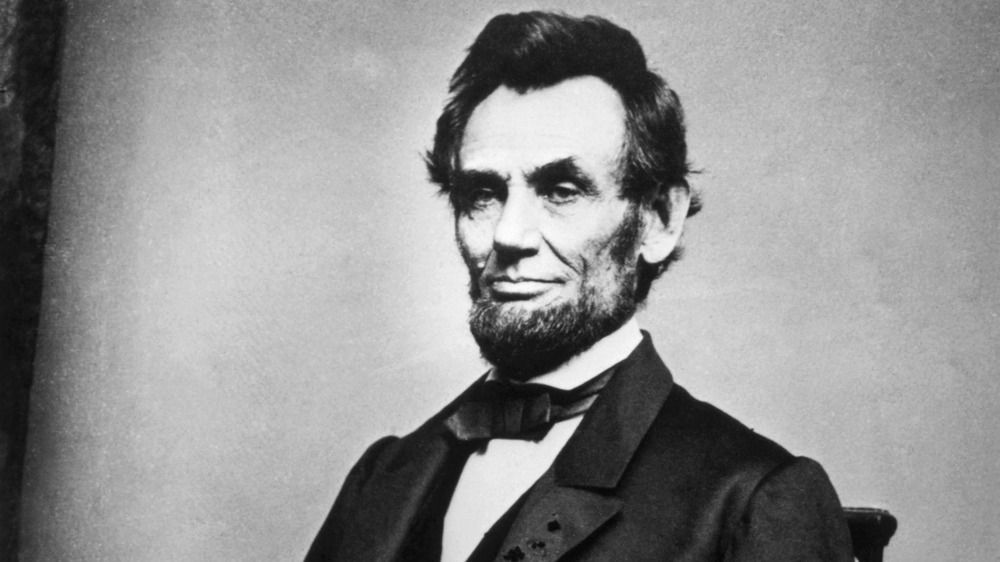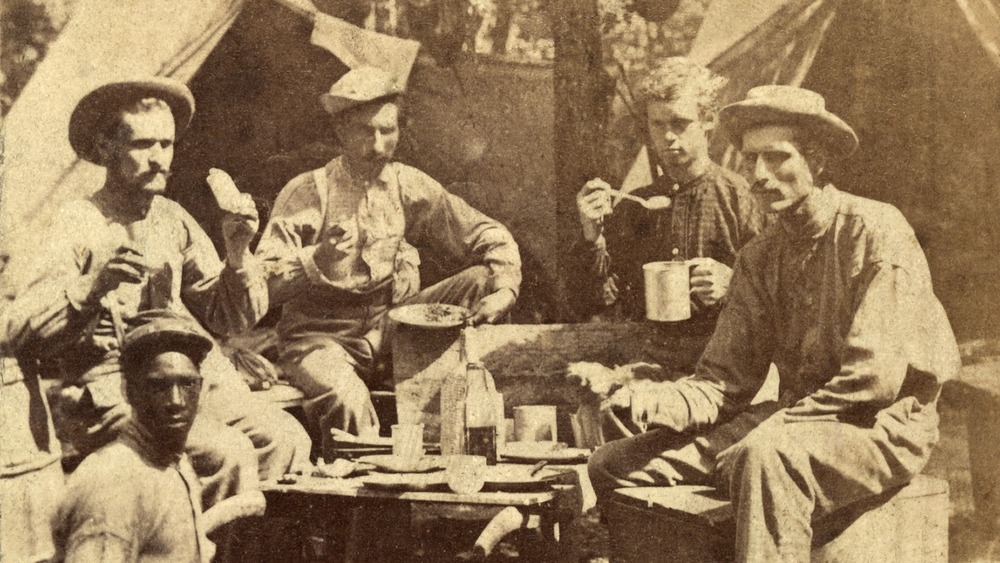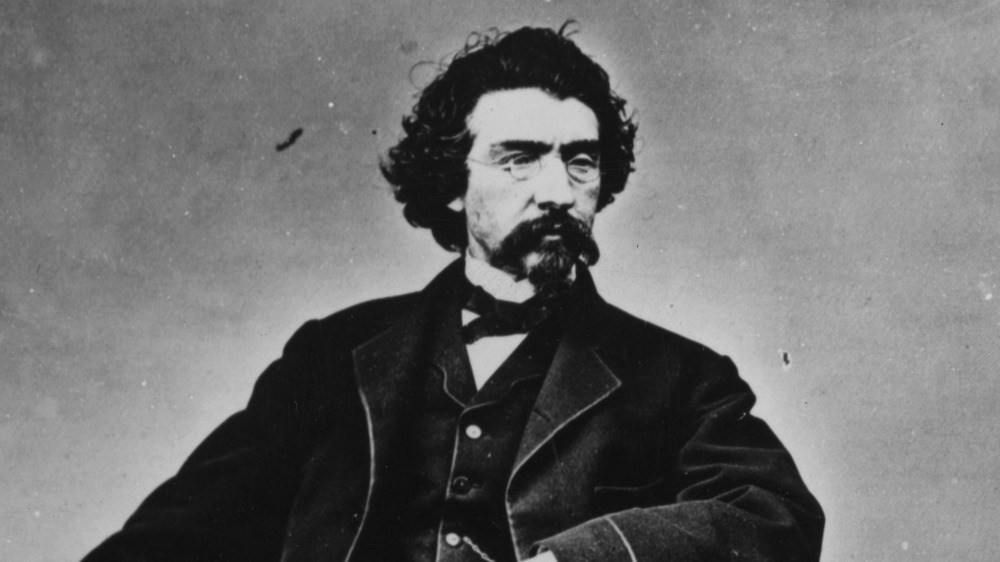The Tragic Death Of Photographer Mathew Brady
After years spent capturing, cataloguing, and showcasing the devastating cost of the United States Civil War, photographer Mathew B. Brady tragically died alone and almost destitute in a hospital charity ward on January 15, 1896. Brady is best known for his still scenes of the Civil War, including the sometimes gruesome portrayals of dead soldiers, as well as portraits of politicians and prominent public figures. In fact, one of his many portraits of Abraham Lincoln graces the U.S. $5 bill.
Mathew Brady, born in 1822, is often called the "father of photojournalism" for his pioneering fieldwork during the Civil War and his use of daguerreotype photography. His mobile studio and innovative darkroom methods let him and his team photograph the war-torn country's people and lands in a way that had never been done before. However, while his stunning portrayals of battlefield scenes, soldiers, and presidents have earned him a place in American history, he tragically died alone, almost forgotten, and only 15 days before an exhibition of his work was to be displayed at Carnegie Hall.
Documenting the Civil War drives Mathew Brady to bankruptcy
Unfortunately, the work that seemed as essential to Mathew Brady then as it is to historians now fell out of fashion once the war was over. According to the National Park Service, Brady asked Abraham Lincoln for permission to photograph and report on the war effort, and the president agreed as long as Brady paid for the effort himself.
Brady accepted the arrangement, thinking the U.S. government would buy the master copies of his photos once the war ended. According to Britannica, he spent more than $100,000 of his own money to fund his endeavor, and he bought supplies on credit. However, once the war was over, the government wasn't interested in buying his substantial catalog of work, which featured more than 10,000 images. The loss pushed Brady into bankruptcy and forced him to sell his photography equipment and studio in New York.
Deteriorating eyesight, debts, and the death of Mathew Brady's wife
The years leading up to Mathew Brady's death were tainted with tragedies of their own. According to the International Photography Hall of Fame and Museum, Mathew Brady was plagued by poor eyesight, and it continued to deteriorate throughout his life. This was no doubt a frustration for the ambitious photographer, and it kept him from being as active in the field as he might have been if he'd had better eyesight.
After the war and the government's initial refusal to buy his work, Brady was about $25,000 in debt. He eventually sold his entire collection of negatives to the U.S. government for $25,000 in 1875, according to the American Battlefield Trust. Brady continued to work as a photographer in Washington D.C. with his nephew, but he was never a financial success. Then Mathew Brady's wife, Julia, died in 1887. Devastated over her loss and his financial situation, he became an alcoholic, notes the New World Encyclopedia.
Mathew Brady was almost destitute when he died
According to the American Battlefield Trust, Mathew Brady was in a traffic accident in 1895 that resulted in both of his legs being broken, and he never recovered. The Library of Congress notes that Brady said, later in life, "No one will ever know what I went through to secure those negatives. The world can never appreciate it." It turns out that those words were somewhat prophetic. While the photographer was a household name during his lifetime, Mathew Brady died alone and almost destitute, having never received significant financial compensation for his work, in a charity ward of Presbyterian Hospital in New York on January 15, 1896. After Brady died, the New York 7th Regiment Veteran's Association paid for the cost of his funeral. The famous photographer was taken to Washington D.C., where he was buried in Congressional Cemetery next to his wife.



